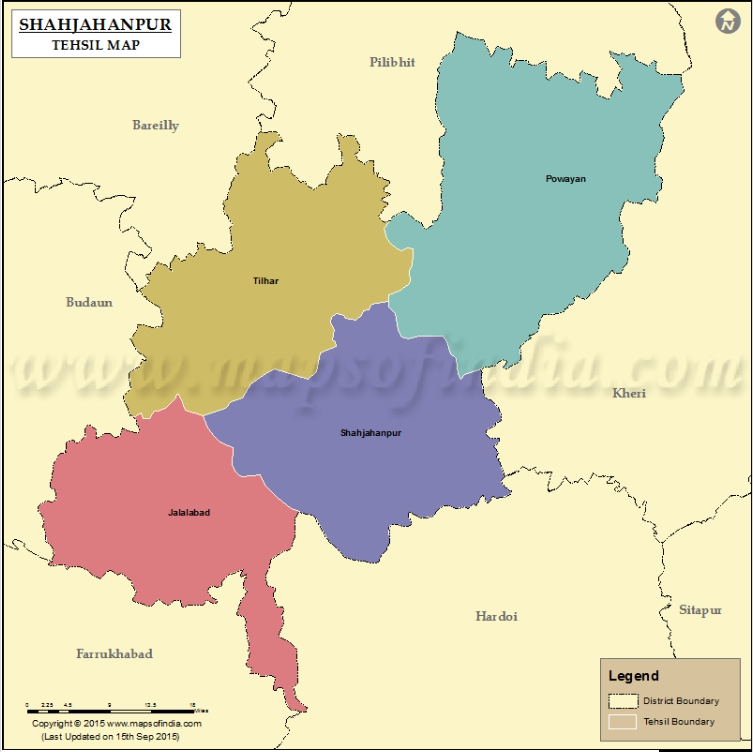Uttar Pradesh Switch to Hindi
UP Leads in PM-Surya Ghar Yojana
Why in News?
In July 2025, Uttar Pradesh (UP) became the leading state in the country for daily solar installations under the PM-Surya Ghar Muft Bijli Yojana.
Key Points
- About: In July, UP surpassed Gujarat (830/day) and Maharashtra (781/day) by installing 891 solar units per day, compared to being behind them in April 2025.
- The state has set a new daily solar installation target of 1,300 to further scale up efforts.
- Key Strategies: UP is prioritizing solar installations in its development strategy, with a revised focus on training and empowering Surya Mitras (solar workers), emphasizing entrepreneurship and customer satisfaction.
- As part of this effort, the five best-performing Surya Mitras were felicitated during an in-house program marking Akshay Urja Diwas.
- Impact: The state's efforts have led to the expansion of the renewable energy vendor network, which has grown from 86 vendors at the launch of the PM Surya Ghar Scheme to over 3,000 vendors currently.
- This growth is driving employment in the solar sector and supporting UP's goal of becoming a one trillion-dollar economy by 2029.
- Long-Term Goals: UP plans to achieve 22 gigawatts of installed solar capacity by 2027, supported by a favorable policy framework and public-private partnerships to accelerate progress.
|
Category |
Details |
|
State Solar Potential |
23 GW |
|
Installed Solar Power Capacity |
2,632 MW |
|
Solar Capacity to be Added under PM KUSUM Scheme |
2,000 MW |
|
Total Electricity Generation Capacity (by FY 2028) |
40,191 MW (30,003 MW operational) |
|
Uttar Pradesh Solar Energy Policy 2022 |
14 GW of Utility Scale Solar Energy power projects planned by FY 2028 |
|
Green Power Tariff |
Rs. 0.54 per kWh (50% of additional cost) |
|
Net Billing / Net Feed-In |
Introduced under UPERC for Rooftop Solar PV Grid-Interactive System (Gross/Net Metering) |
Key Facts About PM-Surya Ghar Muft Bijli Yojana
- About: The PM Surya Ghar Muft Bijli Yojana, launched in February 2024 by the Ministry of New and Renewable Energy (MNRE), aims to provide free electricity to one crore households by installing rooftop solar panels.
- With a total budget of Rs 75,021 crore, the scheme is planned for implementation until FY 2026-27.
- It offers up to 300 units of free electricity per month and provides a subsidy covering up to 40% of the installation cost, promoting widespread solar energy adoption across the country.
- Eligibility: Indian citizens, homeowners, valid electricity connection, and no prior solar subsidy.
- Implementation: It will be implemented by the National Programme Implementation Agency (NPIA) at the national level and State Implementation Agencies (SIA) at the state level.
- Key Components:
- Central Financial Assistance (CFA): Provides financial support to residential consumers for installing rooftop solar panels through the National Portal.
- Model Solar Village: Create one Model Solar Village per district, promoting solar energy adoption.
Uttar Pradesh Switch to Hindi
Shree Kashi Vishwanath Dham is Plastic-Free Zone
Why in News?
The Shree Kashi Vishwanath Dham in Varanasi was officially declared a plastic-free zone from 11th August 2025.
Key Points
- About: A series of measures were introduced to eliminate plastic use within the temple premises, making it a model of sustainability and eco-friendliness.
- Initiative and Ban: Following a complete ban on single-use plastics ahead of the Shravan month, the authorities at Kashi Vishwanath Dham have also imposed a blanket ban on plastic utensils used for carrying water, milk for offerings, and plastic baskets used for carrying flowers and other worship materials.
- Eco-Friendly Alternatives: To support this initiative, vendors were provided with eco-friendly baskets made of bamboo strips and stainless steel along with other metal utensils.
Shree Kashi Vishwanath Temple
- Location: Varanasi, on the western bank of the Ganga River, India’s holiest river.
- Significance:
- Oldest surviving city and cultural capital of India.
- It enshrines the Jyotirlinga of Shiva, Vishweshwara (Vishwanath), which is one of the twelve Jyotirlingas.
- The temple has been a spiritual center for many great saints such as Adi Shankaracharya, Ramkrishna Paramhansa, Swami Vivekananda, Goswami Tulsidas, Maharshi Dayanand Saraswati, Gurunanak, etc.
- Temple Construction:
- Built in 1780 by Maharani Ahilya Bai Holkar of Indore.
- Naubatkhana (Naqqar Khana) was added in 1785 by Collector Mohd. Ibrahim Khan (at the behest of Governor General Warren Hastings).
- In 1839, Maharaja Ranjit Singh donated gold to cover two domes; the third dome remains uncovered.
Uttar Pradesh Switch to Hindi
Renaming of Jalalabad to Parashurampuri
Why in News?
The Union Home Ministry has officially approved the renaming of Jalalabad town in Uttar Pradesh’s Shahjahanpur district to Parashurampuri.
Key Points
- About: The Union government has directed the Uttar Pradesh government to notify the new name, Parashurampuri, and register it in both Devnagri (Hindi) and Roman (English) scripts, along with all regional languages.
- The Uttar Pradesh government, in its request to the Ministry of Home Affairs (MHA), had emphasized that Jalalabad is recognized as the birthplace of Parashuram, the saint, and is home to an ancient temple dedicated to him.
- History: Jalalabad was established around 1560 and was named after Mughal emperor Jalal-ud-din Muhammad Akbar (Son of Humayun), popularly known as Akbar the Great.
- The state government began developing Jalalabad as a tourist destination in 2016.
- Process of Renaming District: The Centre has no role in altering or creating districts, as states have the authority to make such decisions, but the Home Ministry is involved when a state seeks to change the name of a district or railway station.
- The State government’s request is sent to other departments and agencies such as the Ministry of Earth Sciences, Intelligence Bureau, Department of Posts, Geographical Survey of India Sciences and the Railway Ministry seeking clearance.
- A no-objection certificate may be issued after examining their replies.
|
Places Previously Renamed in UP |
|
|
Old Name |
New Name |
|
Allahabad |
Prayagaraj |
|
Faizabad |
Ayodhya |
|
Mughalsarai Railway Station |
Pt. Deen Dayal Upadhyay Nagar |
|
Jhansi Railway Station |
Veerangana Laxmi Bai |
|
Banaras |
Varanasi |
Uttar Pradesh Switch to Hindi
Uttar Pradesh Footwear, Leather, and Non-Leather Area Development Policy 2025
Why in News?
In a move to enhance UP's status in the global footwear, leather sector, the Uttar Pradesh (UP) government has approved the Uttar Pradesh Footwear, Leather, and Non-Leather Area Development Policy 2025.
Key Features of Policy
- Export Boost: The policy seeks to boost Uttar Pradesh's share in leather and non-leather exports by attracting international investments, with dedicated investment drives conducted in countries like China and Japan.
- Modernization: Emphasis on upgrading technology, modernizing production facilities, and launching training programs to improve product quality and generate employment.
- Establishment of Centres of Excellence (CoEs) in the leather and footwear sector.
- Grants to support IPR (Intellectual Property Rights) development, covering up to Rs. 1 crore per unit.
- Skill Development: Training centers will focus on upskilling youth, with specialized courses designed in partnership with educational institutions.
- Targeted to create approximately 22 lakh jobs in the sector over the next five years, with a significant focus on employing women and people with disabilities.
- Dedicated Leather Parks: The government will create large plots of land and establish dedicated leather parks with plug-and-play facilities, waste treatment plants, and state-of-the-art infrastructure.
- Kanpur, Agra, and Unnao will see the establishment of mega-leather parks to cater to growing demand.
- Special incentives for setting up operations in underserved areas like Bundelkhand and Purvanchal.
- Financial Incentive: The policy includes provisions to support both new and existing businesses by providing incentives and subsidies for setting up new leather parks and clusters.
- 25% Capital Subsidy for setting up leather parks or clusters on 50+ acres.
- 100% Exemption on Stamp Duty for land purchase related to the project.
- Reimbursement of 50% transportation costs for exporting products to markets outside Nepal, Bangladesh, and Bhutan for the first three years.
- Sustainability Focus: 50% Reimbursement for adopting carbon credit certification, renewable energy certifications, and energy audits.
- 75% Subsidy for obtaining international sustainability certifications.
- Support for adopting biodegradable tanning agents and waterless dyeing technologies.
Industry Insights
- Market Positioning: UP is one of India’s leading hubs for leather and footwear, contributing nearly 46% of India’s total leather exports.
- Key Locations: Agra is renowned as the 'Footwear Capital of India,' while Kanpur is a major player in leather accessories and saddlery.
- Estimated Market Size: The market size of UP's leather industry is valued at approximately $3.5 billion, with the footwear segment being a significant contributor.





.png)



-UPPCS-English%20(web).png)
-UPPCS-English%20(mobile).png)
.jpg)
.jpg)

.jpg)



 PCS Parikshan
PCS Parikshan


